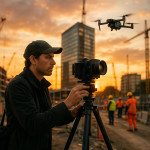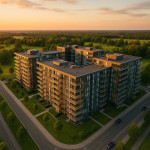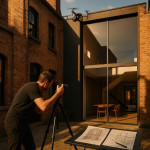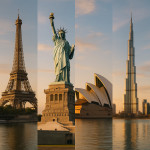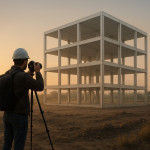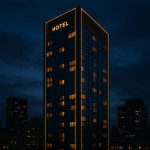Site scouting for architecture shoots: secure permits, safety and optimal angles
Visual overview
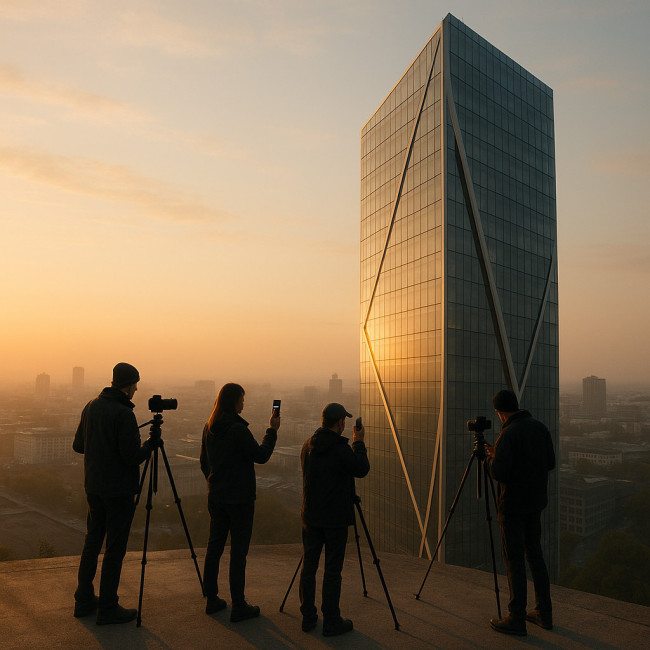
Site scouting for architecture shoots decides whether your final images feel iconic or average. This guide shows you how to obtain permits quickly, keep every crew member safe and pinpoint lighting angles that elevate each façade. Follow the steps to shorten pre-production, avoid costly fines and walk onto set already knowing your winning frames.
Why site scouting matters for architecture shoots
Great buildings deserve thoughtful visuals. Site scouting for architecture shoots lets you:
- Spot signature lines, reflections and sightlines before the client arrives.
- Verify that legal, logistical and safety requirements will not derail the schedule.
- Plan equipment loads, crew size and mobility routes efficiently.
- Align artistic intent with structural narratives, boosting storytelling impact.
Skipping this stage can force emergency reshoots, inflate budgets and delay campaign launches. Treat the scout as insurance for creative and commercial success.
Permit strategy: secure legal clearance early
Identify the controlling authority
Every location has at least one decision-maker who can say no. Research whether the building is privately owned, listed as heritage or managed by a city film office. Public plazas often require coordination with both municipal authorities and adjacent property managers.
A quick search on the architecture photographer directory reveals contact notes many peers have already logged. Use these clues to save phone calls.
Document package checklist
- Written synopsis of the project and intended usage.
- Shoot dates and time blocks, including setup and strike.
- Site map marking tripod and light positions.
- Public liability insurance certificate (2–5 million € typical).
- Risk assessment summary (see next section).
Timeline and fees
Processing times vary sharply by city. Factor this into your project calendar:
Source : City film offices
Cities charge either a fixed application fee or daily rates based on crew size. When budgeting, cross-check our licensing landmark architecture photos guide to avoid duplicate payments for stills usage.
Safety first: protect crew, gear and public
Risk assessment walk-through
During site scouting for architecture shoots, note uneven paving, overhead hazards, traffic flow and emergency exits. Photograph each risk point and tag GPS coordinates for your call sheet.
Insurance and compliance essentials
| Coverage | Recommended limit | Why it matters |
|---|---|---|
| Public liability | €2–5 million | Protects against injury claims from passers-by. |
| Equipment | Replacement cost | Covers theft or weather damage onsite. |
| Drone liability | €1 million+ | Mandatory in many jurisdictions for aerial shots. |
Need aerial angles? Review drone workflows for architectural photography for additional aviation rules.
On-site protocols on the shoot day
- Brief crew on evacuation routes and first-aid points.
- Use high-visibility vests when shooting near traffic.
- Anchor light stands with sandbags; wind loads on rooftops change fast.
- Assign a safety spotter to monitor pedestrians during long exposures.
Finding optimal angles and light
Study the building narrative
Every angle tells a different story. Walk around the perimeter at three focal lengths: ultra-wide, standard and telephoto. Mark vantage points where lines converge cleanly and foreground clutter is minimal.
Leverage natural light windows
Golden hour softens façades and reveals materials. Use apps such as SunCalc to predict sun azimuth and elevation. Our sun-path scheduling tips explain how to pair azimuth data with client mood boards.
Test shots: drones, 3D and VR previews
Scouting with a lightweight drone gives quick elevation references without climbing permits. Export orthographic frames, overlay them on CAD drawings and refine compositions. If the client owns BIM data, import it into a VR headset to rehearse camera moves indoors.
Toolkit for efficient site scouting
- Laser distance meter: confirm setback distances without tapes.
- 360-degree camera: capture immersive references for retouching notes.
- Polarised sunglasses: judge glare before bringing ND filters.
- Collapsible reflector: test quick fill options for interior windows.
- Permit folder: printed approvals avoid network drop chaos at security desks.
Pair these tools with the architecture photographer hiring checklist to streamline conversations when subcontracting additional shooters.
FAQ
- How far in advance should I apply for a location permit?
- Submit documents at least two weeks before the shoot. High-profile or heritage sites may need a month.
- Do I need a permit for interior-only architecture shoots?
- Yes. Building owners often require evidence of insurance and written permission even when the public cannot see the production.
- What insurance cover is considered standard?
- Public liability of €2–5 million plus equipment replacement value. Add drone liability if you plan aerial work.
- How can I calculate the golden hour for my site?
- Enter the GPS coordinates into a sun-path app such as SunCalc or PhotoPills. The tool displays start and end times for civil twilight at your shoot date.
Quick knowledge quiz
Take the next step
You now know how site scouting for architecture shoots safeguards legality, safety and creative quality. Block time in your calendar today to research your next location and request permits. By the time you step onto set, every angle will already be yours.
Ready to book? Compile your scouting notes and pitch them to your client this week.
